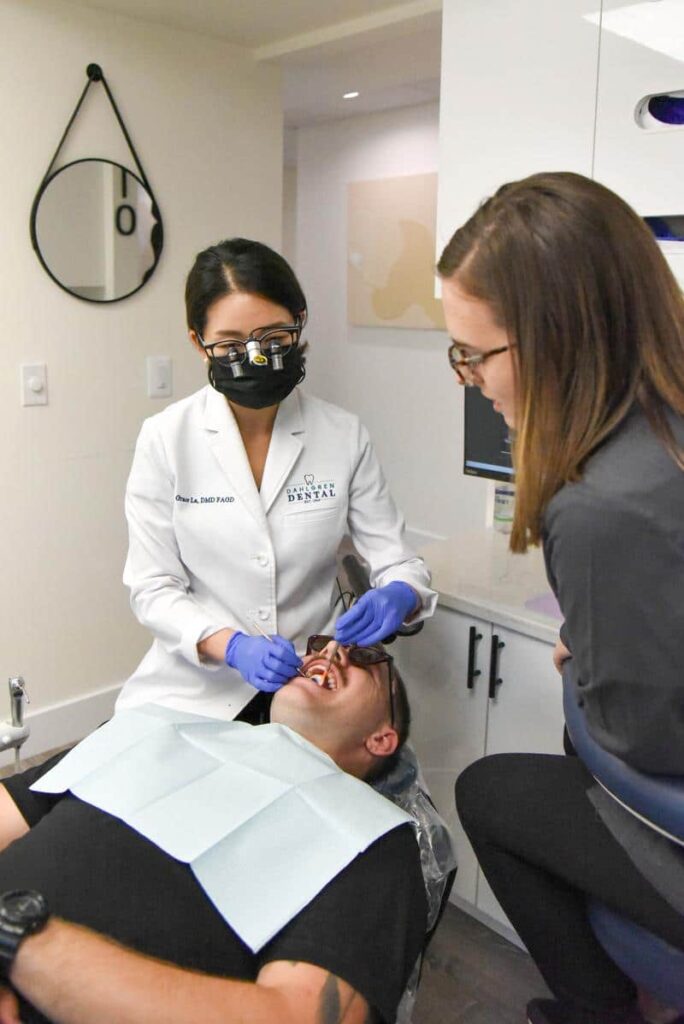GENERAL DENTISTRY
Great Oral Hygiene Through Prevention And Intervention

General Dentistry includes the diagnosis, treatment and management of your overall oral health care needs, including preventive dental exams and cleanings, preventive treatments, periodontal treatment and root canals. Dahlgren Dental aims to keep your teeth, gums and overall oral health in good condition and fix any problems you may develop.
Dahlgren Dental wants to help you achieve the smile of your dreams, and we are equipped to do so. Using state-of-the-art technology and expertise, our dental team can tackle even the toughest of problems. Dr. La and her team know how stressful visits to the dentist can be, and we will work with you to ensure your experience with us is as comfortable as possible.
Regular Exams and Cleanings
Having good oral health is vital for living a healthy lifestyle. Having regular dental exams and cleanings can help prevent tooth decay, gum disease, and other issues that affect your teeth. Visiting Dahlgren Dental every six months gives you the chance to talk to the dentist about any questions you may have about your oral health.
Regular exams are an essential part of maintaining your oral health. During a general dentistry exam, we will check for cavities, gum disease, tooth decay, tooth damage caused by trauma or an accident. We will also look at your teeth to determine if any treatment is required to improve your oral health.
Each regular exam includes a detailed tooth cleaning, in which our hygienists will remove plaque and tartar buildup from the tooth’s surface and the gumline and polish the teeth.
Preventative Dentistry
The goal of preventative general dentistry is to stop dental disease before it starts. To do this, patients must receive routine exams and cleanings, as well as education about healthy dental practices. For example, using proper brushing techniques is important for preventing gum disease, as well as avoiding the consumption of sugary food products.
Besides everyday brushing and flossing and dental cleaning, two of the best tools for preventing tooth decay are dental sealants and fluoride varnish. Both preventive measures have great benefits, and their effectiveness has been proven in general dentistry. Dental sealants and fluoride treatments have been used for decades to combat childhood tooth decay but can also be used by adults.
Root Canals
Symptoms That May Indicate You Need A Root Canal:

Periodontal Therapy, Deep Cleaning And Periodontal Maintenance
Periodontal disease is a chronic inflammatory condition that occurs due to the accumulation of plaque on the tooth surface and periodontal tissues. A periodontal pocket forms when the gums start to pull away from the teeth. The depth of these pockets is determined by probing with a periodontal probe. These pockets are perfect for bacteria to grow and further infect the gums and possibly damage the teeth and jawbone.
Symptoms Of Periodontal Disease:
Visit Us
Monday – Thursday
7:00 AM – 4:00 PM

